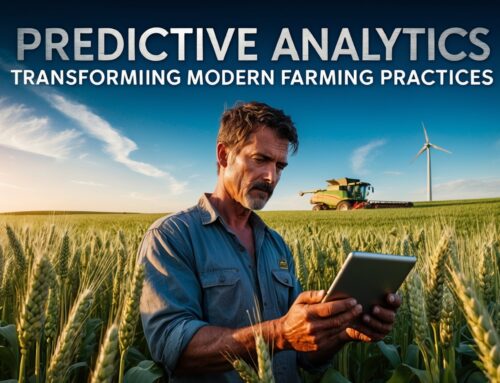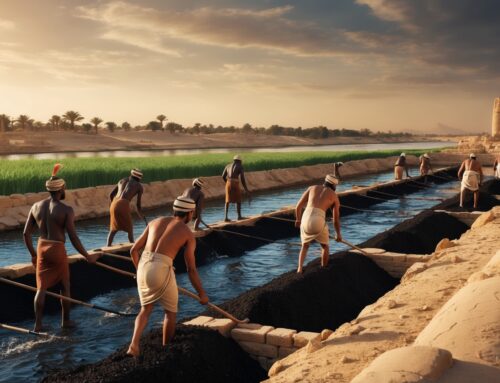Soil moisture measurement is a crucial part of modern farming, enabling farmers to make data-driven decisions for efficient irrigation. As technology advances, there are a variety of soil moisture sensors available, each with unique advantages and applications. In this post, we’ll take a closer look at some of the more advanced types of soil moisture sensors, including capacitance sensors, tensiometers, time-domain reflectometry (TDR), and neutron probes. We’ll discuss how each type works, its strengths and limitations, and when you might want to use each one on your farm.
Capacitance Sensors: Efficient and Reliable
Capacitance sensors are among the most popular soil moisture sensors used in agriculture today. These sensors work by measuring the dielectric constant of the soil, which changes with the soil’s moisture content. Capacitance sensors are quick to respond, easy to install, and provide real-time data, making them an excellent choice for many applications.
How They Work
Capacitance sensors use an oscillating electric field to measure the dielectric constant of the soil. Water has a much higher dielectric constant than soil, so as the moisture level increases, the dielectric constant also increases. The sensor detects these changes and converts them into a soil moisture reading.
Advantages and Limitations
- Advantages: Capacitance sensors are relatively inexpensive, easy to install, and provide continuous, real-time data. They are also less affected by soil salinity compared to other types of sensors, making them versatile across different soil types.
- Limitations: Capacitance sensors require calibration to the specific soil type for accurate readings, as different soils have varying dielectric properties. Without proper calibration, the accuracy of the readings may be compromised.
Capacitance sensors, like Terrestream’s Irrigauge, are ideal for farmers who need a reliable, easy-to-use solution for monitoring soil moisture and optimizing irrigation.
Tensiometers: Measuring Soil Water Potential
Tensiometers are another type of soil moisture sensor, but instead of measuring the moisture content directly, they measure the soil water potential—the energy plants need to extract water from the soil. This makes tensiometers particularly useful for determining whether plants are experiencing water stress.
How They Work
A tensiometer consists of a water-filled tube with a porous ceramic tip at the bottom. As the soil around the tensiometer dries out, water is drawn out of the tube through the ceramic tip, creating a vacuum. The strength of this vacuum is measured by a gauge, which indicates the soil water potential.
Advantages and Limitations
- Advantages: Tensiometers provide a direct measurement of soil water availability, which can be more meaningful than soil moisture content alone, especially in clay-heavy soils. They are also relatively low-cost and easy to use.
- Limitations: Tensiometers are less effective in very dry soils because the water in the tube can be completely depleted, causing the reading to drop to zero. They also require regular maintenance to prevent air bubbles, which can interfere with accuracy.
Tensiometers are best suited for soils that retain water well, such as loam or clay, and are commonly used in crops that are sensitive to water stress.
Time-Domain Reflectometry (TDR): Precision and Versatility
Time-Domain Reflectometry (TDR) is an advanced technique for measuring soil moisture with high precision. TDR sensors measure the time it takes for an electromagnetic pulse to travel through the soil, which is influenced by the soil’s water content.
How They Work
A TDR system sends an electromagnetic pulse down a metal probe inserted into the soil. The speed of the pulse is affected by the dielectric constant of the soil, which changes with moisture content. By measuring the time it takes for the pulse to reflect back to the sensor, the soil moisture level can be determined.
Advantages and Limitations
- Advantages: TDR sensors are highly accurate and can provide detailed information about soil moisture distribution at different depths. They are also less affected by soil temperature and salinity compared to capacitance sensors.
- Limitations: TDR systems are more expensive than other types of sensors and can be complex to install and operate. They also require careful calibration to ensure accurate readings.
TDR sensors are ideal for research purposes or for farmers who need very precise soil moisture data for high-value crops.
Neutron Probes: The Gold Standard for Accuracy
Neutron probes are considered one of the most accurate methods for measuring soil moisture, often used as a benchmark for calibrating other types of soil moisture sensors. Neutron probes measure the hydrogen content in the soil, which is closely related to the soil moisture content.
How They Work
A neutron probe consists of a radioactive source that emits fast neutrons. When these neutrons collide with hydrogen atoms (primarily found in water), they slow down. The probe then counts the number of slow neutrons, which is proportional to the soil moisture content.
Advantages and Limitations
- Advantages: Neutron probes provide highly accurate and reliable measurements of soil moisture, even in challenging soil conditions. They can measure soil moisture at multiple depths with a single probe.
- Limitations: Neutron probes are expensive and require specialized training to use safely, as they involve radioactive materials. Additionally, they are not practical for continuous, unattended monitoring.
Due to their cost and complexity, neutron probes are typically used for research and calibration purposes rather than day-to-day irrigation management.
Comparing Sensor Types: Which One Is Right for You?
Choosing the right soil moisture sensor depends on your specific needs, budget, and the characteristics of your soil and crops.
- Capacitance Sensors: Great for general use, real-time monitoring, and cost-effective soil moisture management. Ideal for small to medium-sized farms looking for an easy-to-use solution.
- Tensiometers: Best for understanding soil water availability and plant stress, particularly in water-retentive soils. Useful for crops sensitive to water stress, such as vegetables.
- TDR Sensors: Ideal for precision farming and research, where highly accurate soil moisture data is required. Suitable for high-value crops that demand exact water management.
- Neutron Probes: Best for research and calibration, offering the highest accuracy. Suitable for situations where absolute precision is necessary, but impractical for routine use.
Leveraging Advanced Technology for Efficient Irrigation
The type of soil moisture sensor you choose can significantly impact your irrigation strategy. For many farmers, a combination of sensors might provide the best results. For instance, capacitance sensors can be used for continuous monitoring, while TDR sensors or neutron probes can be used periodically to validate the data and ensure accuracy.
With tools like Terrestream’s Irrigauge, FieldLink, and FieldHub, you can leverage the latest in soil moisture technology to make informed, data-driven decisions about irrigation. Whether you need real-time monitoring, detailed analysis, or the most precise measurements available, there is a sensor that meets your needs.
Conclusion: Choosing the Right Sensor for Your Farm
Advanced soil moisture sensors offer a range of options for farmers looking to optimize their irrigation practices. From the versatility of capacitance sensors to the precision of neutron probes, each type of sensor has its strengths and best-use scenarios. By understanding how these sensors work and what they can offer, you can make the best choice for your farm’s unique needs.
The right soil moisture sensor can help you save water, reduce costs, and ensure that your crops get exactly what they need to thrive. Explore Terrestream’s offerings to find the perfect fit for your farm and take your irrigation management to the next level.





